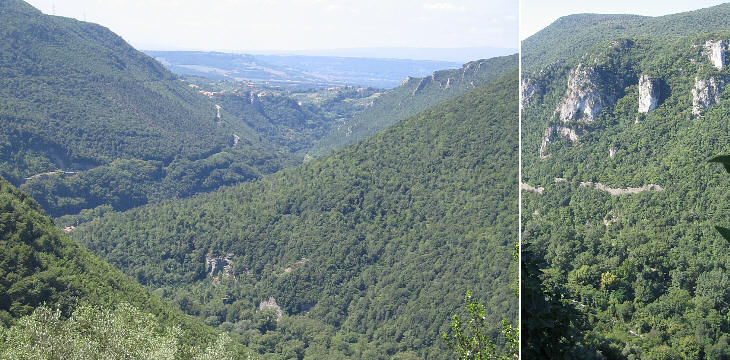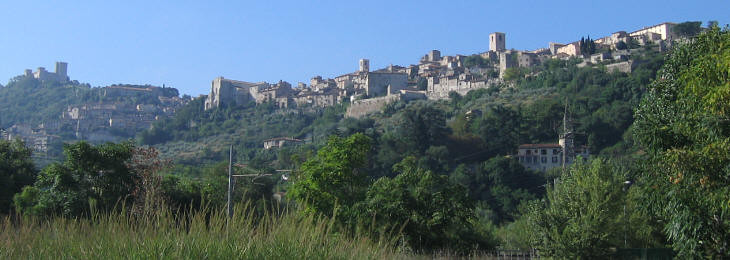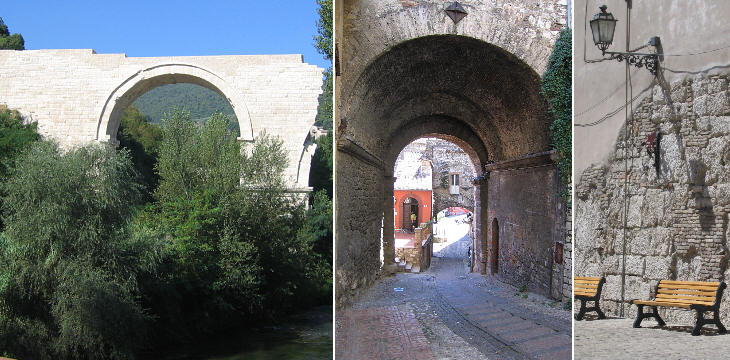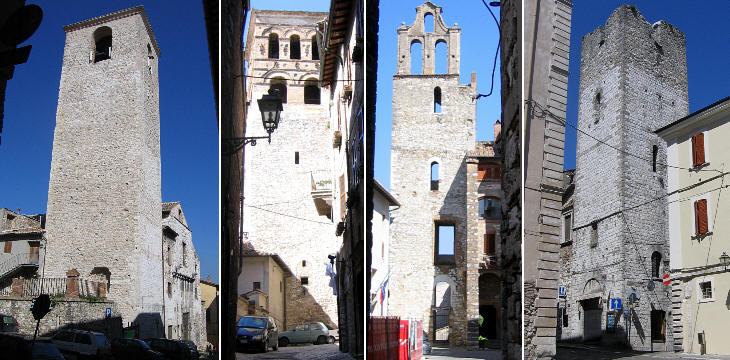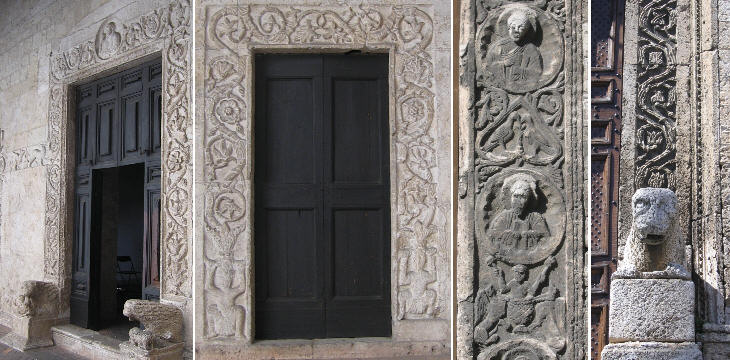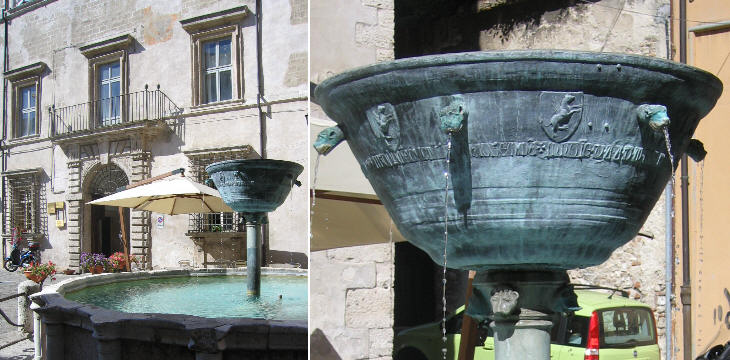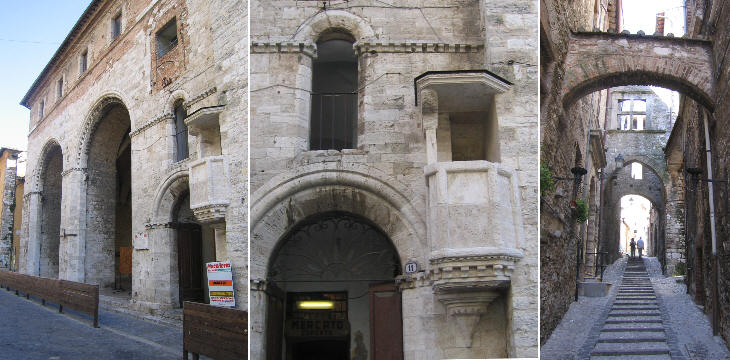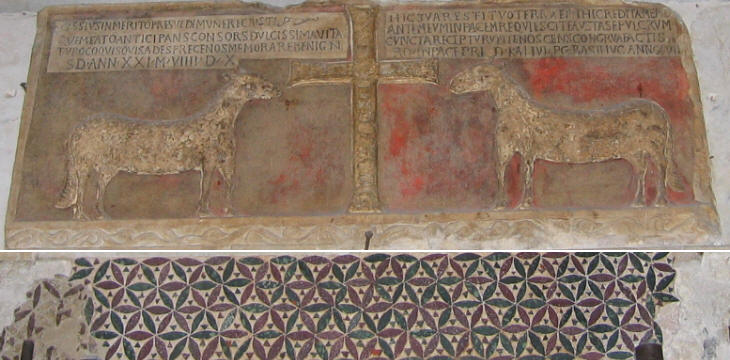  What's New! Detailed Sitemap All images © by Roberto Piperno, owner of the domain. Write to romapip@quipo.it. Text edited by Rosamie Moore. Page added in October 2006. |
Everyday a train leaves Termini at 8:14. First stop: Orte; second stop ... 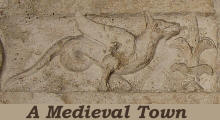 Narni Narni(relief at S. Maria Impensole) After leaving the Orte Junction the 8:14 train departs from the main line to Florence and from the Tiber valley: it goes eastwards through a narrow gorge formed by the River Nera.
In the XIXth century the railway line and a road were built on the Nera right bank after dams controlled its course; Via Flaminia, the historical road which linked Rome with Umbria and Marches followed a route through the woods on the hills south of Nera.
Where Via Flaminia eventually reached the end of the Nera gorge the Romans founded Narnia, on the site of a previous town they had conquered in 299 BC. The location of the Roman town is visible in the right part of the photo shown above while the left part of the image shows the medieval expansion of the town on a nearby hill.
Via Flaminia crossed the river on a very high and imposing bridge built as part of a major improvement of Via Flaminia ordered by Emperor Augustus. The Romans modified the original landscape in order to obtain a sort of long and narrow terrace at the top of the hill. Parts of the arches and walls of Narnia can still be seen at several points of today's Narni.
Narni suffered from the fall of the Roman Empire, but after the year 1000, due to its position on a main trading route, it profited from the recovery of the Italian economy. The town was situated at the perfect strategic position which made it easy to defend, but its inhabitants had to deal with internal strife and the main families lived inside house-towers: some of them were turned later into bell towers and they were spared by the XIVth century decrees of the papal government which placed limits on the height of private buildings.
The economic development of Narni led to the construction of several churches: their portals were decorated with a mixture of classic motifs, portraits of saints and human beings in pretty strange postures who can hardly be linked to known religious or mythological episodes (see a puzzling capital in S. Maria Impensole). The image used as background for this page shows a relief in S. Francesco.
The symbol of Narni is a griffin and similar mythical creatures are portrayed in reliefs walled on several buildings. A more elaborate relief portrays a fight between two knights in a tournament.
Narni has two very peculiar medieval fountains; peculiar because of their shape and for the use of bronze at a time (the inscription on the fountain makes reference to the year 1303) during which metallurgy was still very primitive.
The wealth enjoyed by Narni in the early XIVth century led to building a town hall and a palace which had a large loggia where the merchants met in case of bad weather: the growth of the population led to building arches over the town narrow streets to create additional rooms.
The cathedral of Narni is a complex building: its many works of art are a sort of summary of the history of the town. It contains a very rare example of VIth century art: the tomb slab dedicated to Cassio, one of the first bishops of Narni, and to his wife Fausta. In the XIIIth century the cathedral was decorated with a Cosmati pavement which at a later stage was removed and used to decorate the walls of a chapel. Move to page two. 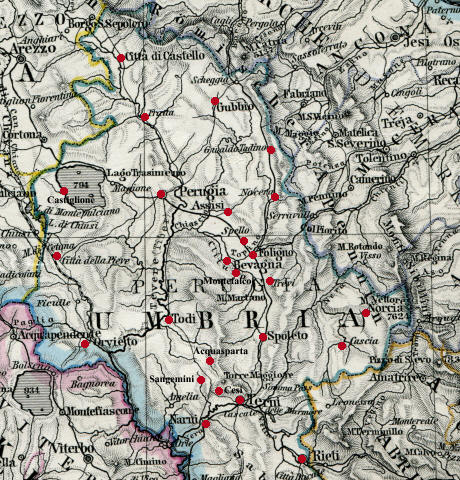
1864 clickable map of Umbria |
